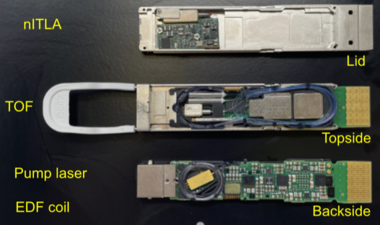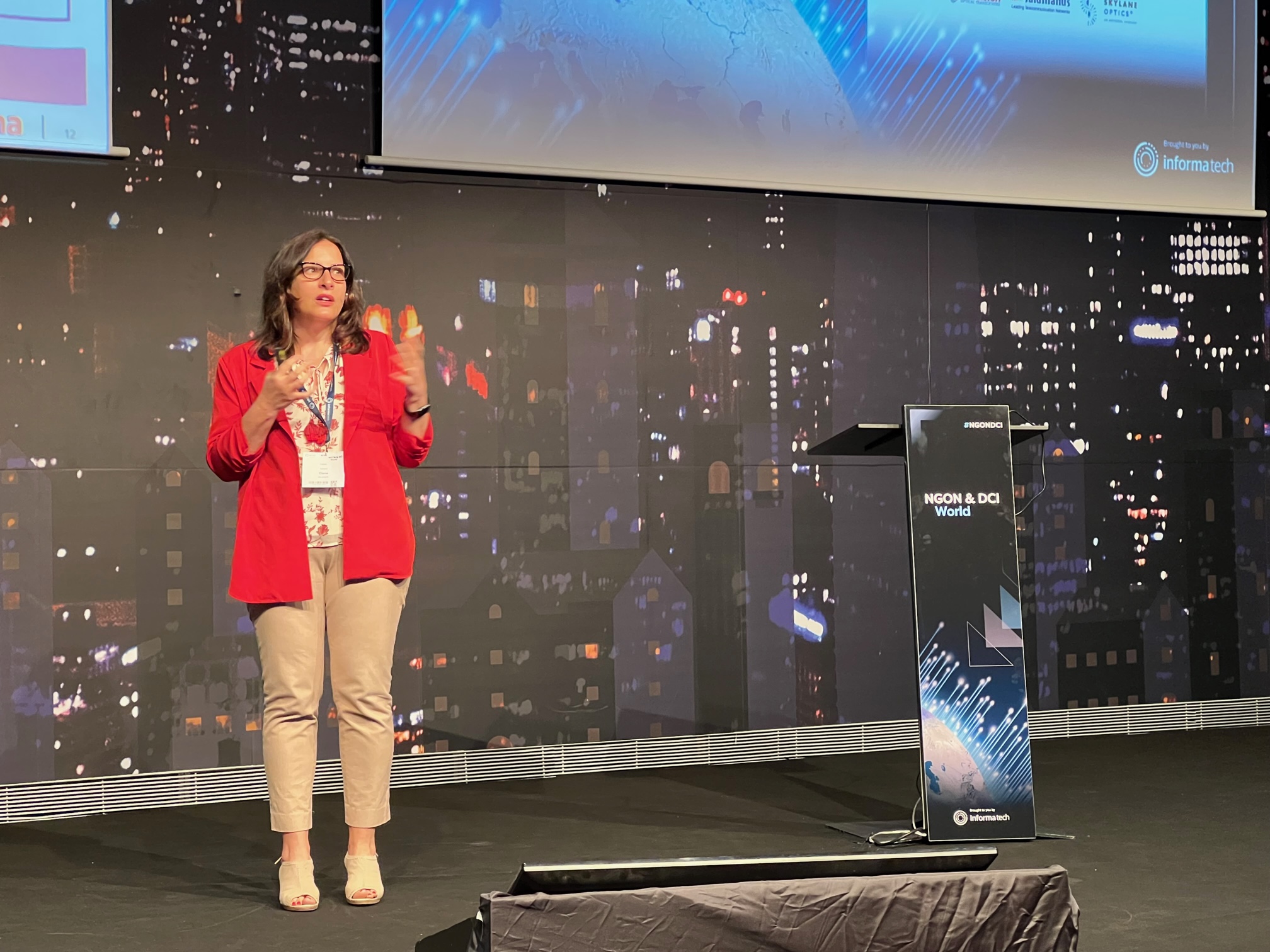Ciena's multi-format 400G coherent QSFP-DD pluggable
 Sunday, October 2, 2022 at 1:24PM
Sunday, October 2, 2022 at 1:24PM Ciena showcased a working 400-gigabit Universal coherent pluggable module at the ECOC 2022 conference and exhibition in Basel, Switzerland.
Ciena is using its WaveLogic 5 Nano coherent digital signal processor (DSP) for the Universal QSFP-DD coherent pluggable module.
"We call it universal because it supports many transmission modes - interoperable and high performance; the most in the industry," says Helen Xenos, senior director of portfolio marketing at Ciena.
 A look inside Ciena's 400-gigabit Universal coherent pluggable module. TOF is the tunable optical filter. Source: Ciena
A look inside Ciena's 400-gigabit Universal coherent pluggable module. TOF is the tunable optical filter. Source: Ciena
The pluggable has custom extended-performance modes and supports three industry formats: the 400ZR interoperable standard, the 400ZR+ multi-source agreement (MSA), and the OpenROADM MSA. (See tables below).







